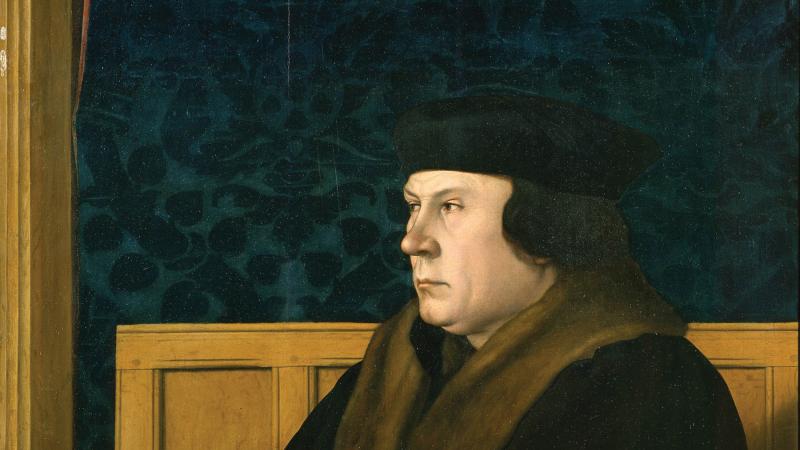In a wry essay written in 2009 for The Guardian, Hilary Mantel comments on what she calls “the time-worn debate about the value of historical fiction” by taking issue with its most contemptible critics: those who fail to recognize the tangled state of history itself as a web of factoids, interpretations, and deceits.
Certain commentators will display a willful misunderstanding of history that comes out most gleefully when their jaundiced eyes turn to historical fiction. As Mantel puts it near the end of the essay, “What really disconcerts commentators, I suspect, is that, when they read historical fiction, they feel their own lack of education may be exposed; they panic, because they don’t know which bits are true.”
Yet if critics often experience a certain panic in the face of historical fiction, writers in the genre will inevitably confront their own forms of anxiety at the hands of readers—and devoted readers of historical fiction can be wonderfully fanatical. Armed with deep stores of knowledge about the bygone eras they cherish, readers will not hesitate to lob charges of anachronism, sentimentalism, presentism, and any other -ism ready to hand at even the most respected contributions to the genre—all in the name of History, which they see themselves as duty-bound to defend at all costs against the liberties taken by careless writers.
Mantel’s own manipulations of the Tudor archive can be things of subtle wonder, and more than one academic critic has shaken a stern finger at her novels for their departures from the known historical record. There’s a brilliant sequence near the end of Bring Up the Bodies that has Thomas Cromwell visiting Anne Boleyn at the Tower of London, where he hears the imprisoned queen, prior to her execution, speak a version of her haunting self-assessment: “‘I have only a little neck,’ she says. ‘It will be the work of a moment.’” Mantel’s source for those sentences is a letter written by Sir William Kingston, Constable of the Tower, to Cromwell, reporting on Boleyn’s speech and behavior during her imprisonment; the historical Cromwell almost certainly never heard Boleyn say any such thing.
Yet Anne’s ghoulish observation is too irresistible not to put in the hearing of the novel’s point-of-view character—so Mantel improvises. As Cromwell and Kingston leave her cell together, Kingston complains, “She keeps doing that. Her hands around her neck. And laughing.” The implication is that Anne has spoken of her “little neck” more than once. Mantel’s sleight of hand gets her out of trouble by creating a slightly plausible scenario for Anne’s saying the words in Cromwell’s presence—and plausibility, of course, is the truest measure of historical fiction, which must invent innumerable scenarios and snippets of dialog for which there is no evidence in the historical record.
I’ve thought often about this interplay of plausibility and invention over the last several years as I’ve made a mid-career transition (really an accretion or add-on) from full-time literary critic to part-time writer of historical fiction. This challenging process has helped me appreciate the intrinsic value of historical fiction as a medium for comprehending the past in all its complexity and color while also recognizing the inherent limitations of the genre as a mode of historical understanding.
My novel, A Burnable Book, is set in late medieval England in the year 1385, during the reign of Richard II—the period that also happens to be my specialty as a scholar and teacher of the literature of medieval Britain. The novel has a large cast, including familiar historical figures such as Katherine Swynford and John of Gaunt as well as a host of characters from the urban underworld of medieval London: butchers, bawds, hucksters and hostelers, even a male transvestite prostitute whose depiction is inspired by a legal document unearthed a number of years ago by a medieval historian.
One surprising challenge was in confronting my own ignorance about so much of the period I study and teach for a living. I can talk all day about the poetry of Geoffrey Chaucer or Sir Thomas Malory, and I’m comfortable lecturing about it in front of large groups of students. Until about three years ago, though, I couldn’t have told you much of anything about their diets, or where and how they slept, or the sorts of noises they would have heard when walking down a London street. True, medieval literature is full of rich details attesting to everyday life in the period (elaborate descriptions of armor and feasts, intricate accounts of dress and costume, and so on); yet these are not the sorts of details I tend to bring out in the classroom.
Writing A Burnable Book has demanded an immersive, challenging, and often joyous process of reeducation as I’ve taught myself everything from the conventions of aristocratic household management to the mechanics of medieval street drainage to, most recently, the technology of the earliest gunpowder weapons (which will feature heavily in The Invention of Fire, the forthcoming sequel). I now find myself looking for excuses to bring such details into class, enriching the study of medieval poetry with informed glimpses at the material culture of the era.
A related challenge has come in negotiating what I would call the disciplinary protocols of literary criticism. I’ve spent a good part of my career as a literary critic and a teacher of literature taking apart stories: questioning their logic, sifting their false moves and unacknowledged ideologies. To move from this kind of critical practice to the writing of realist and plot-driven fiction is to embrace a mode of written expression and a form of thought that have been trained out of our critical souls.
You see, members of my generation of literature PhD students were trained in what critics like to call the hermeneutics of suspicion. We were taught to be skeptical of any claims to narrative coherence, let alone the self-knowing narrative perspectives demanded by the form and style of the realist novel. Yet recreating the world of medieval England has forced me to suspend disbelief and skepticism about the possible limits of historical knowledge in order to imagine and inhabit a world I’ve always studied and taught from a suspicious (if affectionate) distance.
In this sense, the writing of historical fiction places the author in the position very much like where the English philosopher R. G. Collingwood once placed the historian. “The history of thought, and therefore all history,” Collingwood wrote, “is the reenactment of past thought in the historian’s own mind.” A writer of historical fiction, which demands the reenactment of thoughts, feelings, and actions grounded in the conjured and manipulated points of view of specific historical personages, is bound to the conventions of a genre that’s founded on subjectivity and storytelling in a very traditional sense.
Yet as the historian Ian Mortimer (aka James Forrester, a writer of popular historical fiction) has put it, “As a novelist I tell lies. Whoppers. All historical novelists do.” One of your tasks as a historical novelist is to lie to your audience—and lie repeatedly and convincingly to those very readers who are so deeply invested in the accuracy and verifiability of your recreation of a particular moment in history. If you choose to write historical fiction, you will constantly be treading that fine line between the true and the plausible.
And plausibility can be a wonderfully malleable thing. Nowhere have I exploited this malleability more fully than in the depiction of my protagonist, the poet John Gower, whose narrative voice is the guiding thread of A Burnable Book. Though little read today except by specialists, Gower was a prolific and respected literary voice in his time, writing over many years and in three languages. The known details of his biography are comparatively few: He lived for some years in Southwark, at the priory of St. Mary Overey (now Southwark Cathedral); he was a man of significant wealth; and he may have had legal training, though it’s unknown what exactly he did for a living.
We do know that Gower was a longtime friend of Geoffrey Chaucer. Chaucer dedicated Troilus and Criseyde to his fellow poet, while Gower mentions Chaucer at the end of his great English poem Confessio Amantis. Chaucer granted power of attorney to Gower during one of his several trips to Italy, and it seems clear that the men were on close terms for long stretches of their careers.
By reputation Gower was a highly moral and loudly moralizing fellow. Chaucer calls him “Moral Gower,” and Gower’s own poetry is full of often simplistic observations on the moral degradations of his day. It is this version of Gower-as-moralizer that informs Shakespeare’s Pericles, in which the poet serves as a chorus of sorts, commenting on and framing the action of the play. In the opening chorus, Gower fashions himself as a phoenix-like rhymer whose words will be extinguished the moment they’re spoken:
To sing a song that old was sung,
From ashes ancient Gower is come;
Assuming man’s infirmities,
To glad your ear, and please your eyes.
It hath been sung at festivals,
On ember-eves and holy-ales;
And lords and ladies in their lives
Have read it for restoratives:
The purchase is to make men glorious;
Et bonum quo antiquius, eo melius.
If you, born in these latter times,
When wit’s more ripe, accept my rhymes.
And that to hear an old man sing
May to your wishes pleasure bring
I life would wish, and that I might
Waste it for you, like taper-light.
There’s a cold touch of analytical humor in Shakespeare’s Gower: a self-consciousness about the artificiality of the theatrical enterprise in confronting such moral degradation in so many aspects of life.
Despite his reputation as a stern moralizer, there are some wonderfully bleak moments in Gower’s writing, and they tend to be my favorite ones, especially those that tend toward the nihilistic. My favorite passage in all of his work comes near the beginning of the Mirour de l’omme, his first major work, written in Anglo-Norman French. Gower is writing here about nothing: not in a Seinfeldian sense, but in a sincere attempt to address the problem of nothingness. “I want,” he writes, “to tell you a little about nothing. When one imagines he has a handful of it, he must go away completely empty.” It gets worse:
All this nothing returns to nothing through nothing, which causes everything to be annihilated: it is nothing that in itself contains all evils. Whenever I recall nothing, I have to heave many a sigh, because I see so many evils come forth from nothing, for all have their desire in the nothing that belongs to this world. That nothing makes them desert their God for a nothing that must revert to nothing and become more vile than dung.
So there you have the first-person historical voice of my protagonist, a bleak authorial idiom far removed from the ribaldry we so often associate with Geoffrey Chaucer’s voice in its various incarnations.
These and other passages in his writings inspired me to reimagine John Gower not as a moral paragon, but as an amoral blackmailer: or, as he describes himself in the opening pages of A Burnable Book, “a seller of suspicion, a purveyor of foibles and the hidden things of private life.” A perverse reinvention, perhaps, yet one that I believe is true to the moral ambivalence and even misanthropy we find in Gower’s poetry, or at least plausibly loyal to it.
Stretching the truth is not the same thing as violating it. As anyone who’s written in the genre knows, getting inside the head of a person who’s been dead for centuries demands a certain amount of deviousness alongside the research and rigor that are natural parts of the crafting of historical character. For those who want to learn about the past, of course, there is no substitute for reading primary sources themselves. Yet historical fiction bends the minds of its authors and its readers in strange and unpredictable ways—and therein, I think, lies its greatest reward.




